“I want to be the master of nobody” — Norbert Wiener
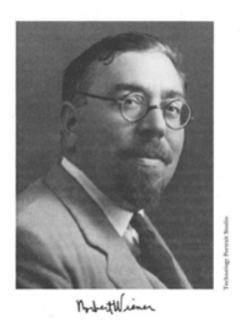
Brief of Wiener’s life
Norbert Wiener was born in a Jewish family in Columbia, Missouri, on November 26, 1894. After Wiener became famous, he published two autobiographies, the first was “The Child Prodigy of the Past” in 1953, which describes some of his childhood memories; the second was “I am a mathematician” in 1956, mainly about his later half life. Wiener’s mother, Bertha Kahn, was born in Missouri, of German Jewish descent, and her father, Leo Wiener, a Jewish of Russian and Polish descent, was self-taught and became a professor of Slavic linguistics at Harvard University at the time. Wiener was homeschooled by his father as a child, went straight to Ayer High School at age 9, became a student at Tufts College at 12, and received a bachelor’s degree in mathematics at 15. The young Wiener was very interested in physics, chemistry, and biology. Later, he worked as a graduate student in zoology at Harvard University for a year. After that, he gave up because he often made mistakes in animal experiments due to his natural eye disease. He then transferred to Cornell University to study philosophy, and returned to Harvard to study mathematical logic the following year. At the age of 18, he received a doctorate in philosophy from Harvard University.
1913 was a year of brilliant academic achievement for the young Wiener. He won the Bowdoin Prize from Harvard University for a philosophical paper. In the same year, he applied to the school for a travel scholarship and was approved to study at Cambridge University in England and Göttingen University in Germany. Immediately after his arrival in the UK, he published a paper on set theory in the Proceedings of the Cambridge Philosophical Society, which is considered to be of great value in the field of mathematical logic.
At Cambridge, Wiener studied mathematical logic and philosophy with Bertrand Russell. Russell became Wiener’s mentor and friend. The teacher told him that it’s better for a person interested in mathematical logic and philosophy to know more mathematics. Following his teacher’s training, Wiener took many mathematics courses and received direct instruction from famous mathematicians such as G.H. Hardy and John E. Littlewood.
Wiener originally planned to study at Cambridge for a year, but Russell was going to lecture at Harvard in the second semester, so he suggested that he go to the University of Göttingen in Germany to take courses taught by David Hilbert and Edmund Landau.
At the University of Göttingen, Wiener completed a course in Landau’s algebraic group theory and studied differential equations under Hilbert. Wiener benefited a lot from his education in Göttingen.
In fact, it was Cambridge and Göttingen that turned the prodigy Wiener into a young mathematician. In the following 50 years of scientific career, Wiener successively involved in philosophy, mathematics, physics, engineering and biology, and achieved fruitful results in various fields, becoming a knowledgeable and versatile scientific master. Looking back, he’s much grateful to Russell and missed Cambridge and Göttingen.
After the outbreak of the First World War, he returned to the United States from Germany, and successively worked as a teacher, editor, telephone operator and columnist and did some other temporary jobs, and passed one year of logistical military service. After unsuccessfully seeking a job at Harvard, he became a lecturer at the Massachusetts Institute of Technology (MIT) in 1919, where he began his academic career, worked and lived until his death.
In 1920, Wiener extended the French mathematician Fréchet’s general theory of limits and differentiation to vector spaces (called “Differential Space” by Wiener) and gave a complete set of axioms. Wiener’s results coincided with a paper published a few weeks later by Polish mathematician Stefan Banach. However, these two essentially identical works came to be known as the theory of Banach Space and Wiener Space, respectively. Wiener’s work laid the foundation for John von Neumann’s approach to operator axioms in Hilbert Space in 1927.
Wiener was the first mathematician to study random Brownian motion mathematically and profoundly. In 1921, he published an important paper on Brownian motion, starting from the theory of measure in function spaces. In 1923, he gave the first rigorous definition of a random function and pointed out that it was a theoretical model of Brownian motion. After that, in the mathematical literature, a measure that describes Brownian motion defined in the continuous function space is called the Wiener measure, the corresponding random process is called the Wiener process, and the integral on this measure is called the Wiener integral. Later, the Japanese mathematician Kiyosi Itô developed the theory of stochastic integration on this basis.
From 1923 and 1925, Wiener made important contributions to the mathematical potential theory. He obtained an exact generalized solution for the Dirichlet problem given a continuous boundary value function, and defined the concept of capacity for general compact sets, and also gave the famous regularity criterion. Wiener thus greatly extended the classical potential theory.
In 1926, Wiener again came to Göttingen, Germany and Cambridge, England as a Guggenheim scholar. In the following years, he made a major breakthrough in the research of harmonic analysis. Wiener borrowed various functions from physics as tools for harmonic analysis, wrote them in the form of Fourier transforms, and then related them to communication theory and obtained modern spectral distributions. Wiener’s results in this area later became the cornerstone of Banach’s algebraic theory, and from this led to results such as Tauber’s theorem in number theory. During this period, Wiener was deeply attracted by mathematical physics and studied quantum theory with Max Born.
In 1926, Wiener was arranged by his parents to marry the German girl Marguerite Engelmann, and they later had two daughters.
In 1929, Wiener returned to MIT from Europe and was promoted to associate professor. That was 17 years after he earned his Ph.D. and 10 years as a lecturer at MIT. At the time, the academy paid no special attention to the genius mathematician—but perhaps it was this unintentional move that kept Wiener from resting on his laurels because of his youth—tragedies such as these are not uncommon in academia.
In 1929, Wiener also instructed Yuk-Wing Lee, an MIT doctoral student who was intern at the Bell Telephone Company, to develop the “Lee-Wiener network” and obtain a patent.
In 1932, Wiener, in cooperation with astronomer Eberhard Hopf, extended Hopf’s study of radiation equilibrium to a class of singular integral equations with a difference kernel given on a semi-infinite interval. Such equations were later called Wiener-Hopf equations.
In 1932, Wiener was promoted to professor. The following year, he shared the Bôcher Prize of the American Mathematical Society every five years with Samuel F. B. Morse for his beautiful work on Tauber’s theorem, and was elected to the National Academy of Sciences.
Between 1935 and 1936, Wiener accepted the advice and recommendation of Li Yurong, who had completed his studies and returned to China to work in the Department of Electrical Engineering of Tsinghua University, and was invited by Mei Yiqi, the president of Tsinghua University in Beijing, and Xiong Qinglai, the dean of the Department of Mathematics, to serve as a visiting professor in the Department of Mathematics and the Department of Electrical Engineering. During this period, he cooperated with Li Yurong to study Fourier transform mathematical filters in the Department of Mathematics, so he later developed a Wiener filter. This research also allowed him to obtain an invention patent. The Wiener filter was the most important scientific achievement in linear filtering and prediction theory at that time, and it became the key to the development of communication theory and its engineering application. Together with Li Yurong, he collaborated with Yu-Hsiu Ku, the dean of the School of Engineering and another MIT Ph.D. returnee, to study the digitization of analog computers. Weiner cherishes his experience in Tsinghua very much. In his book “I Am a Mathematician” published in 1954, he said that he would rather choose 1935, when he was a visiting professor at Tsinghua University, as the starting point for his later creation of control theory — it seems that he already had a lot of knowledge about cybernetics at Tsinghua University at that time. His scientific contribution to this field will be discussed in detail later. Weiner also became friends with Hua Luogeng during his time at Tsinghua University. In 1936, Hua Luogeng received an annual Class B subsidy of 1,200 US dollars from the Chinese Culture and Education Foundation, and he could go to Cambridge University as a visiting scholar for further studies. Weiner wrote a letter and recommended Hua Luogeng to Hardy. After Wiener returned to his country, he encouraged von Neumann of Princeton to visit Tsinghua University. Von Neumann and his wife were very interested at that time, so Wiener formally wrote letters of recommendation to Mei Yiqi, Xiong Qinglai and Li Yurong. It was a pity that the Anti-Japanese War broke out two months later, and the whole plan came to nothing.
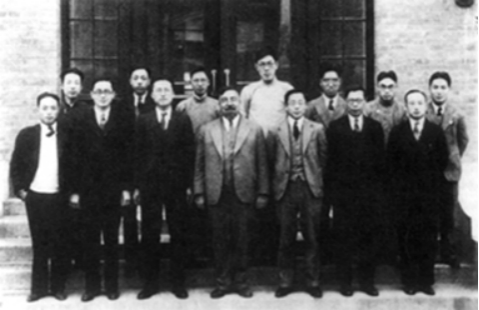
In 1936, Wiener and staff of Department of Electrical Engineering, Tsinghua University took a group photo: Li Yurong, the second from the left, Gu Yuxiu, the third from the left, Weiner, the fourth from the left
In 1938, Wiener introduced the concept of homogeneous chaos when he studied generalized harmonic analysis. For the first time in history, he defined and used the informal term “chaos” in a formal mathematical sense. Of course, his original intent was very different from the chaos theory in nonlinear science as we understand it today, and it hadn’t gone so far as the latter.
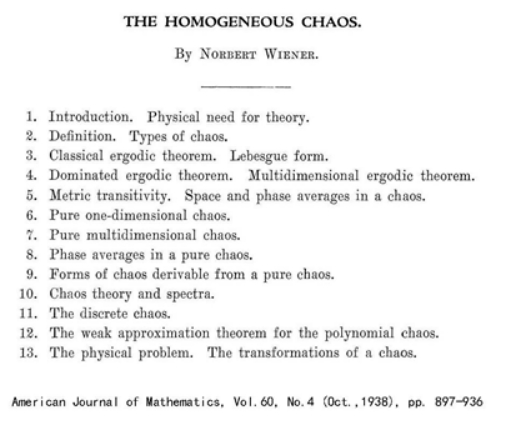
In 1940, Wiener wrote a long letter to Vannevar Bush, President Roosevelt’s scientific adviser, based on the results of his collaborative research with Li Yurong and Gu Yuxiu at Tsinghua University, proposing several principles for designing new electronic computers: Use digital programs instead of analog programs; use electronic components instead of mechanical components; use binary instead of decimal; store data and calculation tables on-board, etc. Bush worked at MIT and was Li Yurong’s doctoral advisor. As a national science adviser and the man behind the Manhattan Project, Bush certainly understood and agreed with Wiener. But Bush did not provide corresponding research funding to Wiener, because he did not think this huge project could be completed before the end of World War II. Later, Bush soon found himself wrong: the first high-speed digital electronic computer in history, “ENIAC” (ENIAC: Electronic Numerical Integrator And Computer), was born in the laboratory of the Department of Electrical Engineering at the University of Pennsylvania (U Penn) in 1942.
During World War II, Wiener and the Russian mathematician A. N. Kolmogorov simultaneously and independently developed the theory of stationary time series estimation. Wiener’s research on communication theory involves mathematics, physics, engineering, neurophysiology and other disciplines. In order to promote the close communication and cooperation of these interdisciplinary disciplines, he actively participated in a regular scientific seminar at Harvard University, which included many physicists, computer scientists, neurophysiologists, psychologists and social scientists, such as Arturo Rosenblueth, the pioneer of cybernetics and artificial intelligence, von Neumann, the founder of game theory and the founder of binary electronic computers, Julian H. Bigelow, the earliest participant in electronic computer design, WarrenS. McCulloch and Walter Pitts, founders of neural cybernetics and artificial intelligence. This group of young people later made extraordinary achievements in “the neglected no-man’s land among various established disciplines” (said Wiener). Wiener’s scientific thinking has far-reaching influence, and even continues to the development of the Internet today — for example, his profound network thinking inspired and influenced C. J. R. Licklider, one of the founders of the Internet.
After World War II, Wiener spent the rest of his life peacefully at MIT. From 1953 to 1964, he visited and gave lectures in India, Japan, Italy, the Netherlands and Sweden, but unfortunately he did not have the opportunity to revisit China.
In 1959, under the advocacy of Wiener, MIT established the world’s first artificial intelligence research group and laboratory, and began the research on early intelligent robots. That same year, Wiener, 65-year old, retired from MIT.
In 1960, Wiener was invited to participate in the first international conference of IFAC (International Federation of Automatic Control) held in Moscow. During the period, when he was asked at a seminar on cybernetics held by the editorial office of the magazine “Philosophical Questions” whether the creation of cybernetics was influenced by some philosophical ideas, Wiener’s answer was yes. He also said: “There is a man among philosophers who, if he lives to this day, will undoubtedly study cybernetics. This man is Leibniz.” In fact, the German mathematician and philosopher Gottfried W. Leibniz was the first person to establish a logical reasoning system by mathematical means, and he also invented binary according to the Chinese Book of Changes, which are the cornerstones of modern electronic computers. Looking back on history, it is also thanks to Qian Xuesen that Wiener was able to attend the first IFAC International Conference in Moscow as the founder of the emerging scientific cybernetics. Wiener’s cybernetics initially came under political attack from the philosophical circles of the former Soviet Union, as said to be a reactionary pseudoscience and a tool in the service of imperialist warfare. In 1954, Qian Xuesen published the book “Engineering Cybernetics”, which systematically clarifies the theoretical value and engineering significance of cybernetics to science and technology such as automation, aerospace and electronic communication. The book was immediately translated into Russian, German and some Eastern European languages, quickly made cybernetics accepted by the scientific community of various countries, including the former Soviet Union, and was established as a rigorous discipline that studies the universal laws of information and control .
In August 1963, Wiener published a short essay titled “God and Golem” about how science, especially cybernetics, would impact religious belief.
In January 1964, Wiener was granted the National Medal of Science by U.S. President Johnson for his “many amazing contributions in pure and applied mathematics, daring to go deep into the engineering and biological sciences and groundbreaking work in these fields.” On March 18 of the same year, Wiener died at the age of 70 during a visit to Stockholm, Sweden.
Three years later, in 1967, MIT and the American Mathematical Society and the Society for Industrial and Applied Mathematics jointly established the Norbert Wiener Prize in Applied Mathematics, granted every three years. In 1987, the American Association of Computer Social Responsibility Experts established the Norbert Wiener Award for Social and Professional Responsibility.
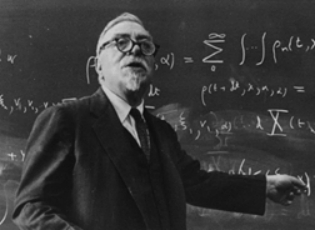
Wiener’s Cybernetics
During his lifetime, Wiener published more than 240 papers and 14 books, covering mathematics, physics, engineering, biology and philosophy. Wiener is one of the founders of the discipline of Cybernetics. The name of the subject Cybernetics comes from the Greek κυβερνήτης (kybernētēs), which means “navigation”, and was probably first introduced by the French physicist and mathematician André-Marie Ampere in his book “Essai sur la philosophie des sciences, v1, 1834; v2, 1843”, but Wiener used it to generalize the three basic theories of information, communication and control. Since its meaning is mainly the latter, it is now generally translated and understood as “cybernetics”.
Wiener participated in the pioneering work of Claude Shannon’s information theory. Wiener understands and interprets information theory from the perspective of DC circuits, regards messages as time series of measurable events, and uses statistical methods to deal with communication problems. Mathematically, he adopts stationary random process theory and various transformation techniques for research. He worked in parallel with Shannon on information theory and also collaborated occasionally. They clarified the principles and methods of information quantification, used “entropy” to define the information content of continuous signals, and established the Shannon-Wiener formula for calculating the information content. Wiener’s pioneering work significantly promoted the establishment of information theory and opened up broad prospects for the application of information theory. In this sense, Shannon said in a general sense: “The glory should go to Professor Wiener”.
Wiener clarified the modern system control thought and feedback regulation principle. After the start of World War II, Wiener participated in artillery control research, and then established the Cybernetics theory. In 1943, Wiener, along with Rosenbluth and Bigelow, wrote an article titled “Behavior, purpose and teleology”, the central idea being that controlling behavior is a tortuous process of random trial and repeated adjustment from cause to purpose. This philosophical article is the first to explicitly conceive how control in the scientific sense can be achieved through feedback.
Wiener pioneered cybernetics, but after the United States dropped the atomic bomb on Japan in 1945, he was deeply disgusted by military operations that used science and technology to create weapons of mass destruction, and thus declined the invitation to participate in the Manhattan Project and refused the various research funds provided by the military.
In January 1947, Wiener officially published a signed article “A scientist rebels” on The Atlantic Monthly, calling on scientists to pay attention to scientific research ethics and carefully consider the possible social consequences of their scientific research.
Wiener proposed and synthesized several of the most fundamental concepts and methods, such as feedback, stability, and composure in the cybernetics in his 1948 book “Cybernetics: or Control and Communication in the Animal and the Machine”, and promoted the study of communication and control between machines and society. This book is generally considered to mark the birth of the theory of control science in the modern sense.
Interestingly, Wiener says in the aforementioned book Cybernetics: “Since Leibniz there has perhaps been no man who has had a full command of all the intellectual activity of his day. Since that time, science has been increasingly the task of specialists, in fields which show a tendency to grow progressively narrower. A century ago there may have been no Leibniz, but there was a Gauss, a Faraday, and a Darwin. Today there are few scholars who can call themselves mathematicians or physicists or biologists without restriction. A man may be a topologist or an acoustician or a coleopterist. He will be filled with the jargon of his field, and will know all its literature and all its ramifications, but, more frequently than not, he will regard the next subject as something belonging to his colleague three doors down the corridor, and will consider any interest in it on his own part as an unwarrantable breach of privacy.” This explains why Wiener was interested and committed to bringing together fundamental theories from different fields of information, communication, and control to create a whole new discipline: Cybernetics.
In 1954, Wiener published another book, The Human Use of Human Beings: Cybernetics and Society. Wiener’s basic description of cybernetics in the book is that modern automata and humans are a composite mechanical or biological system composed of sensory devices, action devices and information transmission systems. Both automata and people are also receiving, processing, transmitting and storing information, and using information to complete actions to achieve contact and interaction with the outside world. In the working process of a system, the information transmission mechanism sends out control signals to instruct the action device to work. The result of the action is detected by the sensory device and fed back to compare with the given signal: if there is a deviation, the deviation signal will control the action device to make self-adjustment and continue to work until the deviation signal disappears. The process described by Wiener is exactly what we know today as the principle of automatic control with negative feedback.
According to this theory, Wiener believed that a mechanical system was fully capable of computing and memory. In 1940, he started thinking about how a computer could work like a brain. He found that the two were very similar, so he thought that the computer is a system for information processing and information conversion: as long as the system can get data, it should be able to do anything that a human can do. But, Wiener warns, computers, as human puppets, could become machines that, once activated, can no longer be shut down, and that they may make decisions on behalf of humans. By extension, he believes that a political system that does not accept negative feedback will eventually collapse, and therefore emphasizes that the survival and development of a society should not be overly dependent on wealth and money, because those things do not provide negative feedback.
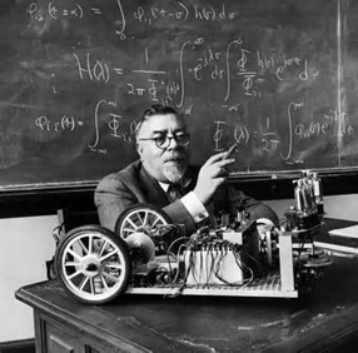
Wiener’s life
Celebrities’ biographies usually only record their success, often daunting future generations. In fact, Wiener is a genius, but also an ordinary people; he is successful, but sometimes failed.
Wiener was probably the first scientist to use a rigorous mathematical analysis method to study the theory of phase synchronization of vibrational waves, but he took a difficult Fourier integration method and finally gave up because he could not find a way to solve the problem.
Wiener and Shannon both collaborated and competed in information theory research. However, different from Shannon, Wiener insisted on the analog rather than digital route in the research of information theory, that is, the use of continuous rather than discrete mathematical theories and tools, and ultimately failed.
In terms of personal life, his father’s madness in raising Wiener into a child prodigy left a strong and lasting shadow of resistance in his heart. In addition, perhaps it was the prodigy’s super hard work that caused Wiener to be deeply short-sighted since he was a child. During his teaching at MIT, it was so serious that he had to touch the wall to walk. After World War II, he showed more pronounced manic symptoms and complained of suicidal thoughts to colleagues. The biography Dark Hero of the Information Age by Flo Conway and Jim Siegelman notes that Wiener, who was Jewish by birth, could not tolerate his wife’s Nazi zeal. In particular, Mrs. Wiener also passed on various scandals about their daughter to her husband. The painful Wiener gradually isolated himself from colleagues, friends and even the outside world, and was alone all day long. He often turned down honors, public events and even academic conferences. After 1953, Wiener no longer continued his research work on Cybernetics, which nearly suspended the growth of this discipline, and it was not until the era of Rudolf E. Kalman after 1960 that this discipline is revitalized and continued to bloom.
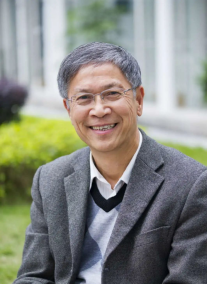
Chen Guanrong | Author
Chair Professor of Department of Electrical Engineering, City University of Hong Kong, Director of Complexity and Complex Network Research Center
Academician of the Academy of Europe, IEE Life Fellow, CI Scientist
Editor-in-chief of Journal of Bifurcation and Chaos
Engaged in non-linear systems and complex network for many years, with articles cited for more than 100,000 times
This article is reproduced from thepaper.cn

















 Alumni
Alumni